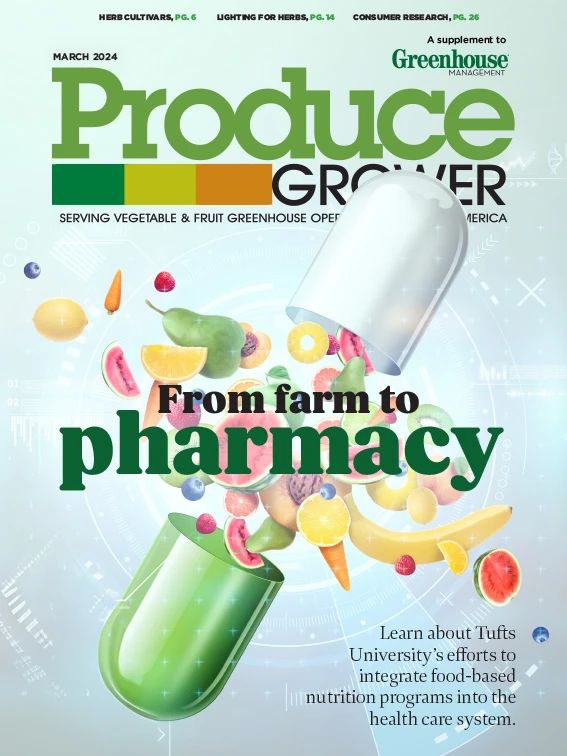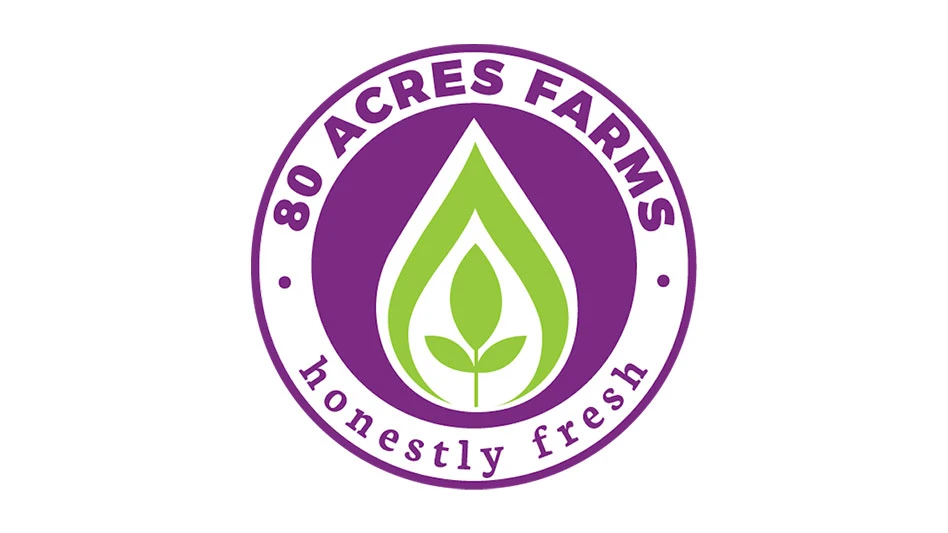
Welcome to our fourth article in a five-part series on balancing environmental parameters to optimize indoor hydroponic and greenhouse potted leafy green and herb production. In our first and second articles, we revealed how daily light integral (DLI), average daily temperature (ADT) and carbon dioxide (CO2) concentration interact to impact the growth, quality and yield of indoor hydroponically grown green butterhead and red oakleaf lettuce. In our third article, we identified the cardinal temperatures for optimizing the growth and development of potted arugula, kale and lettuce. Now in this article, we’ll delve into the synergistic effects of DLI and ADT on the growth and quality of six popular potted herbs: basil, mint, oregano, thyme, sage and rosemary. This article provides practical insights for greenhouse herb growers aiming to optimize their growth strategies.
Light and temperature interactions on herbs
As we discussed in our first article in the series, light intensity and temperature are pivotal in crop growth and often interact in how they influence key crop characteristics. The amount of light a plant receives over a day, the DLI, is the major driving force behind photosynthesis and crop growth at large. Inadequate DLIs can lead to leggy, weak plants with poor flavor and color. Increasing DLI provides large initial growth impacts, but the effect often tapers out — increasing from low to moderate DLIs will provide drastic crop improvement, while increasing from moderate to high light will often bring lesser improvement as the plants become light saturated.
Temperature plays a key role in crop development, heavily influencing aspects such as the rate of leaf unfolding, size and color. Crop developmental responses to temperature can be graphed along a temperature response curve as described in article three; the base temperature indicates the lowest temperature where development begins, then a linear increase in the development rate occurs until an optimal temperature range is reached, followed by a decline in the development rate until it halts at the maximum temperature.

The experiment
Cuttings of rosemary ‘Arp’, spearmint ‘Spanish’, sage ‘Extrakta’, thyme ‘German Winter’ and Greek oregano, alongside seeds of sweet basil ‘Nufar’, were propagated in a greenhouse with an ADT set point of 77 °F, root-zone heating of 75 °F, and a DLI of 12 mol·m–2·d–1 (Fig. 2). The young plants were transplanted into 6-inch pots after 14 days for mint and oregano, 18 days for basil, 24 days for thyme, 31 days for sage and 32 days for rosemary. In each container, there were either 16 basil seedlings, four spearmint or rosemary cuttings, six oregano or thyme cuttings or three sage cuttings.
After transplant, the containers were placed into one of five connecting greenhouse compartments with ADTs ranging from 75 to 91 °F [(8 h /16 h) day and night temperatures of 77/ 66, 82/72, 88/77, 93/82 and 99/88 °F] and DLIs of 6, 10 or 16 mol·m–2·d–1 achieved with either 36 or 56% shade cloth or full sun light (Fig. 2). We harvested the plants after 37 days from propagation for spearmint, 38 days for oregano, 42 days for basil, 53 days for thyme, 77 days for rosemary and 78 days for sage. At harvest, we measured crop height from the bottom of the pot to the top of the plant, plant width, stem caliper and recorded the presence of visible buds, fresh mass and dry mass.


Our findings
Basil
Fresh mass of basil was lowest at the coldest temperature (75 °F) under a low DLI of 6 mol·m–2·d–1), but the optimum temperature (Topt) varied by DLI. When grown at the lowest DLI, the Topt was 82 °F, but was similar at 86 and 91 °F. Under a DLI of 10 mol·m–2·d–1, the Topt was 91 °F; while under a DLI of 16 mol·m–2·d–1, the Topt was 86 °F. Generally, at lower temperatures it was not beneficial to increase DLI for basil, while increasing from 10 to 16 mol·m–2·d–1 resulted in minimal increases in fresh mass (Fig. 3).
Spearmint
Unlike basil, spearmint fresh mass was greatest at cooler temperatures. At 6 mol·m–2·d–1, the Topt was 79 °F; at 10 mol·m–2·d–1, the Topt was 82 °F; and at 16 mol·m–2·d–1, the Topt was 79 °F. The fresh mass was similar at both the moderate and high DLI. However, the lowest quality plants were those grown under low light and high ADTs.
Oregano
Under a low DLI of 6 mol·m–2·d–1, the Topt of oregano was 75 °F. Fresh mass significantly improved at a DLI of 10 mol·m–2·d–1 and the range of Topt increased from 75 to 86 °F. The greatest fresh mass occurred at the highest DLI of 16 mol·m–2·d–1, with a Topt of 82 °F. The lowest fresh mass occurred at the lowest DLI at an ADT of 91 °F (Fig. 4).
Rosemary
Rosemary had a consistent Topt of 79 °F regardless of the DLI, and it benefited from high DLI across all temperatures. Increasing the DLI from 6 to 10 mol·m–2·d–1 increased the fresh mass by 50%, while increasing from 6 to 16 mol·m–2·d–1 doubled the fresh mass.
Sage
The highest quality sage was produced at an ADT of 79 °F across DLIs, and the lowest quality plants were at an ADT 91 °F (Fig. 5). Increasing the DLI above 6 mol·m


Thyme
Thyme had a consistent Topt of 79 °F across the DLI tested, and was of poor quality at the high ADT of 91 °F. At 79 °F, raising the DLI from 6 to 10 mol·m–2·d–1 increased the fresh mass by 24%, while increasing from 6 to 16 mol·m–2·d–1 resulted in a 44% increase of fresh mass (Fig. 6).
Key takeaways
From this study, we can see how much consideration is needed when deciding what balance of light and temperature is right for each crop. For some of potted herbs we investigated, such as thyme and rosemary, we observed a consistent increase in fresh mass as we increased the DLI, while with others this was very temperature dependent. With the exception of basil, quality and yield was negatively influenced at an ADT of 91 °F. Additionally, DLIs <10 mol·m–2·d–1 are not recommended for any of the herbs investigated.
Get curated news on YOUR industry.
Enter your email to receive our newsletters.
Explore the March 2024 Issue
Check out more from this issue and find your next story to read.
Latest from Produce Grower
- University of Evansville launches 'We Grow Aces!' to tackle food insecurity with anu, eko Solutions
- Lawsuit challenges new H-2 visa rules
- Q&A: Sandra Eskin Leads Food Safety Advocacy Organization, STOP, as CEO
- Find out what's in FMI's Power of Produce 2025 report
- The Growth Industry Episode 3: Across the Pond with Neville Stein
- Martin A. Makary Sworn in as FDA Commissioner
- PG CEA HERB Part 2: Analyzing basil nutrient disorders
- LettUs Grow, KG Systems partner on Advanced Aeroponics technology







